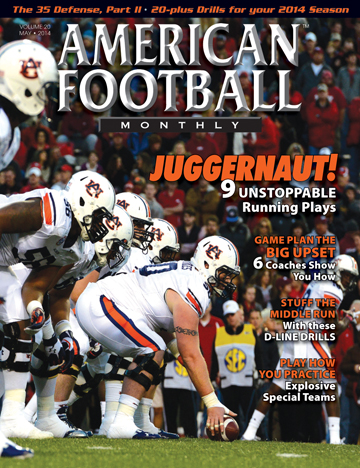Article CategoriesAFM Magazine
|
BE SPECIAL By committing to better special team practice organization, your units will create more explosive plays.by: Mark RibaudoSpecial Teams Coach Abilene Christian University © More from this issue Special teams are an important part of any football game. They are the first play of every game, and many times the last and decisive play in a game. During every special teams play, one of these situations occurs – a large field position exchange, a change of possession, or a scoring opportunity. Frequently, two of these situations take place on the same special teams play. By their very nature, special teams plays are “special” and have a big impact on the outcome of the game. All football teams strive to win the turnover battle and have more explosive plays than their opponent. Explosive plays usually involve large sections of field position, changes of possession, or scores. These elements are the essence of special teams. Special teams enable you to get the ball to your best offensive weapon in the open field with ....The full article can only be seen by subscribers.
|
|
|||||||
| HOME |
MAGAZINE |
SUBSCRIBE | ONLINE COLUMNISTS | COACHING VIDEOS |
Copyright 2026, AmericanFootballMonthly.com
All Rights Reserved





